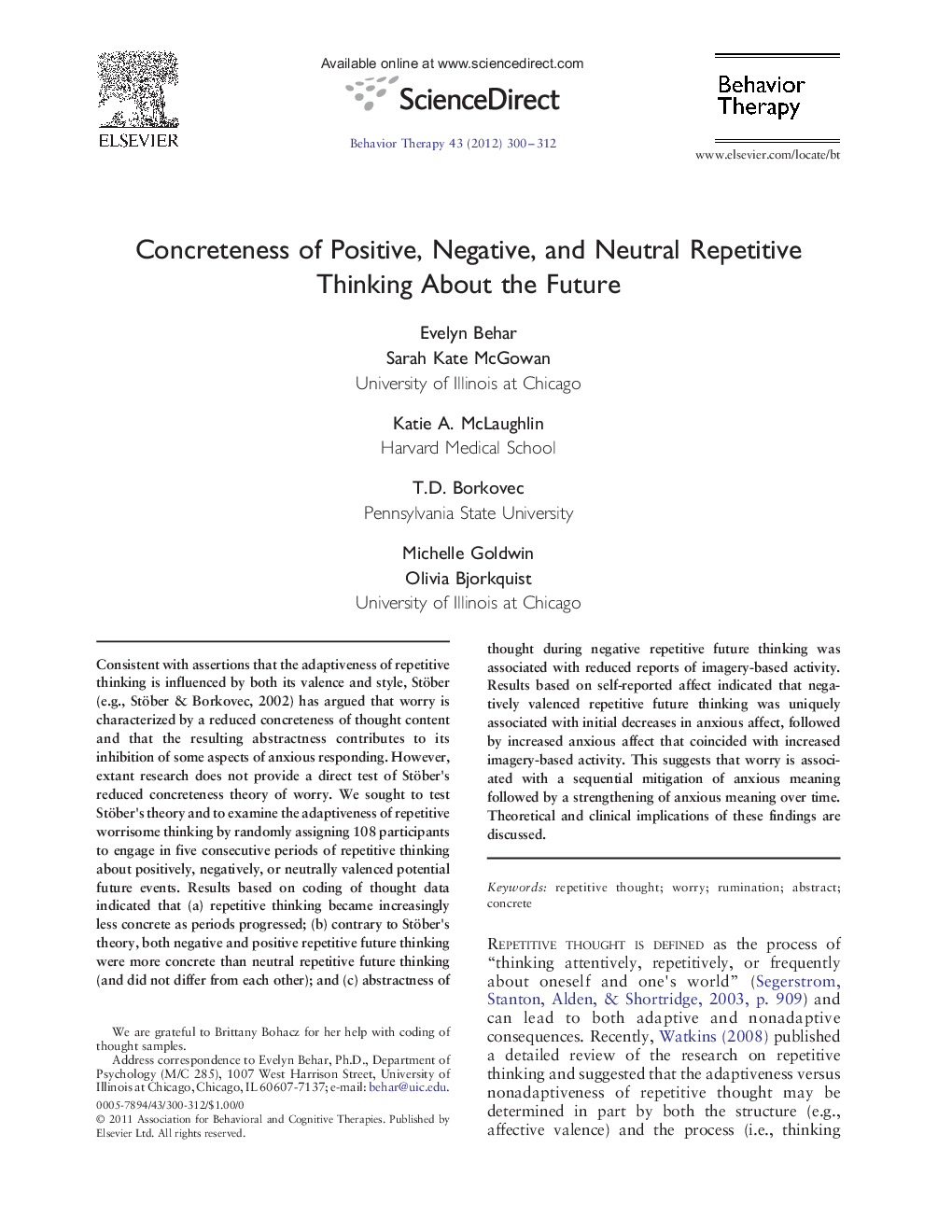| کد مقاله | کد نشریه | سال انتشار | مقاله انگلیسی | نسخه تمام متن |
|---|---|---|---|---|
| 901443 | 915868 | 2012 | 13 صفحه PDF | دانلود رایگان |

Consistent with assertions that the adaptiveness of repetitive thinking is influenced by both its valence and style, Stöber (e.g., Stöber & Borkovec, 2002) has argued that worry is characterized by a reduced concreteness of thought content and that the resulting abstractness contributes to its inhibition of some aspects of anxious responding. However, extant research does not provide a direct test of Stöber's reduced concreteness theory of worry. We sought to test Stöber's theory and to examine the adaptiveness of repetitive worrisome thinking by randomly assigning 108 participants to engage in five consecutive periods of repetitive thinking about positively, negatively, or neutrally valenced potential future events. Results based on coding of thought data indicated that (a) repetitive thinking became increasingly less concrete as periods progressed; (b) contrary to Stöber's theory, both negative and positive repetitive future thinking were more concrete than neutral repetitive future thinking (and did not differ from each other); and (c) abstractness of thought during negative repetitive future thinking was associated with reduced reports of imagery-based activity. Results based on self-reported affect indicated that negatively valenced repetitive future thinking was uniquely associated with initial decreases in anxious affect, followed by increased anxious affect that coincided with increased imagery-based activity. This suggests that worry is associated with a sequential mitigation of anxious meaning followed by a strengthening of anxious meaning over time. Theoretical and clinical implications of these findings are discussed.
► Participants engaged in five periods of repetitive thinking about positively-, negatively-, or neutrally-valenced potential future events.
► Repetitive thinking became increasingly less concrete as periods progressed.
► Both negative and positive repetitive thinking were more concrete than neutral repetitive thinking (and did not differ from each other).
► Abstractness of thought during negative repetitive thinking was associated with reduced reports of imagery-based activity.
► Negative thinking was associated with initial decreased anxiety, followed by increased anxiety that coincided with a spike in imagery.
Journal: Behavior Therapy - Volume 43, Issue 2, June 2012, Pages 300–312